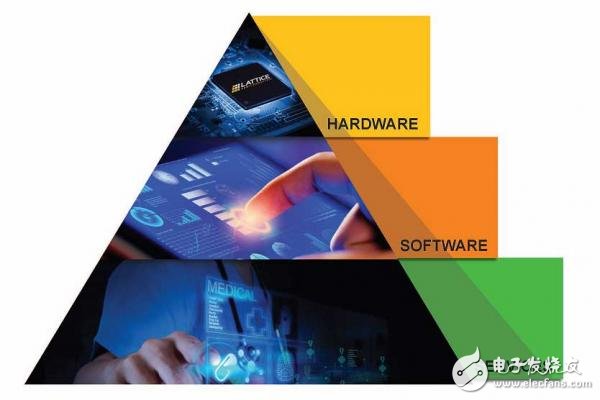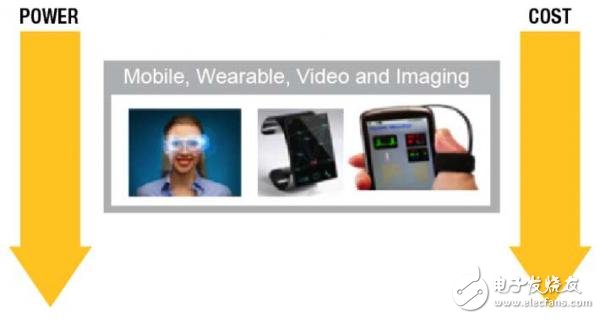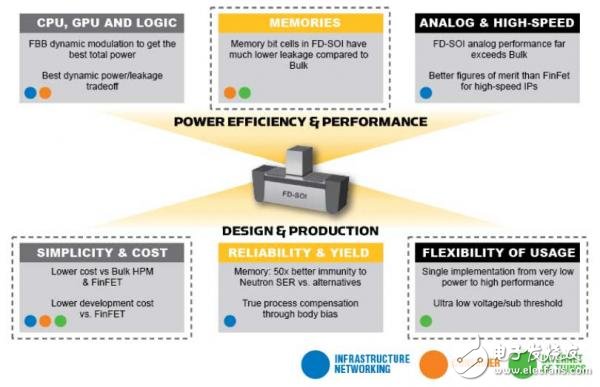The Internet of Things has become very popular, and various electronic devices connected to the Internet and connected to each other constitute the world of the Internet of Things. The breadth of the Internet of Things is truly amazing – from smart consumer electronics applications and vehicles to almost everything in the field of wearables, and coverage will expand dramatically due to the explosive growth of mobile applications. These products and the resulting ecosystems will change people's daily lives. For individual consumers, the Internet of Things enables people to handle everyday things at a lower cost and with greater efficiency, making life safer and even making people's lives healthier. For the business world, the Internet of Things will revolutionize automation, energy efficiency, asset tracking and inventory control, logistics and positioning, security, personal tracking and resource conservation.

Figure 1: The Internet of Things brings together multiple ecosystems.
Applications that make up the IoT ecosystem range from smart appliances (such as refrigerators, ovens and HVAC systems) to automotive to wearable devices. Although they may not be the same in terms of application form and usage, the above application areas have four key commonalities: perception, data collection, interconnection, and data processing. Essentially, IoT devices can sense things and then collect the perceived data, which is then transmitted over the Internet to another device or location for processing or analysis. Most of the devices in the IoT ecosystem are battery powered and must be operated for years without maintenance or replacement. If you use a single battery and provide long-term service, the power consumption of these devices must be minimized. There are also some IoT devices that will be powered by external sources, ie energy harvesting. In both cases, energy efficiency is critical to harnessing the potential of the Internet of Things for the benefit of the general public.
Achieve energy efficiency: the main challenge in the Internet of Things
The Internet of Things itself is a big concept that can revolutionize social life and people's work. In fact, the development of IoT applications is taking place in many areas. In the near future, many things will look different from the current ones, and this is not just limited to the consumer electronics field. Imagine a wearable device that typically requires eight or nine components, like the Nike FuelBand, might only need one component after three to four years, and the price will become cheaper.

Figure 2: How to reduce power consumption, reduce size, and reduce costs are major challenges in the IoT space.
Consumer demand for smaller, thinner devices is driving this trend, especially in the field of wearables. This trend is compounded by the fact that the number of transistors is expected to increase in about 18 months as predicted in Moore's Law. Reduce 8 to 9 components to 1 level of integration. Not only that, but when you integrate more functions onto a single chip, you have to add more memory, which in turn increases power consumption, and this doesn't mean that networking devices are pursuing lower power consumption. Demand.
In the next few years, the Internet of Things will provide us with a very good user experience. It will provide better interconnection, be simpler and more convenient, and be "always on", or the experience for the user is "always on". If the IoT device is "always on", always on standby and executing the user's instructions, then there is no need to click the button to activate the device. Wearable health tracking devices are a visible example. It records the user's heart rate and the all-day sleep/activity time every day. Future IoT devices also need to implement a similar “24 hours a day, 7 days a week†job. IntelliSense and big data analytics become very important at this point. With smarter data acquisition and processing with larger data sets, dynamic trends or important projects based on demand can be quickly identified and executed. . I have to remind you once again that energy efficiency is still critical because data collection increases power consumption, as does memory storage data.
Overcome challenges
Achieving energy efficiency that is critical to IoT devices makes it easy to run a device for a few years with a single battery. This requires the use of low power components and a more efficient power system. At the same time, the architecture and the chip itself need to be changed. Now, all aspects of the IoT world are designed to focus on how to achieve energy efficiency as much as possible. For smartphones, this means an order of magnitude improvement that won't happen overnight. This upgrade needs to be achieved step by step through several generations of products.

Figure 3: Every aspect of the Internet of Things requires energy efficiency.
Compared to processor-only components, advanced process technology and existing speed/power flexibility are used to extend the power consumption of their products. With integrated semiconductor devices and software solutions, energy efficiency can be increased by orders of magnitude. The Internet of Things is a compelling and promising field that can change every aspect of people's daily lives. The field of Internet of Things has achieved little success, but the space for development is still huge. To fully realize the potential of the Internet of Things, it is necessary to make the equipment in the IoT ecosystem smaller and cheaper, and at this time, a higher level of integration becomes crucial. It also requires device development engineers to bring an "always on" experience to users and find new ways to more intelligently perceive and analyze the data captured by the device.
An Oil Filled Panel Heater, also known as an oil-filled heater, oil-filled radiator, or column heater, is a common form of Panel Heater used in offce and home. oil panel heaters will take quite a lot of time to heat. The advantage is though, Oil Heater are able to maintain the warmth considerably longer than many other heaters, too. If you don't mind waiting a little bit, the oil heaters will suit you perfectly well.
portable oil heater, Oil Panel Heater, wall panel eheater with GS/SAA approval by TUV/BV/Intertek.
Welcome to OEM
thank you
Oil Panel Heater
Oil Panel Heater,Oil Filled Panel Heater,Wall Mounted Oil Filled Convector Heater,Oil Filled Panel Heaters Wall Mounted
Fenry manufacturing Co., Ltd , https://www.cnfenry.com
